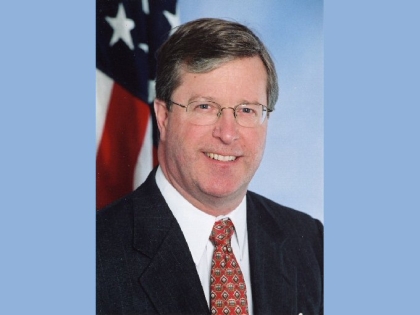
Senate Approves "Upstate Now"
Albany, N.Y., January 23-- "Upstate Now can be the bridge to an upstate turnaround," State Senator George H. Winner, Jr. (R-C-I, Elmira) said today following the Senate’s approval of "Upstate Now," a comprehensive, 10-point strategy aimed at igniting job creation and economic growth locally and across the upstate New York region.
At a Capitol news conference late this morning Winner joined his Senate Republican Majority colleagues to stake out reviving the upstate economy as priority No. 1 in this year’s state budget negotiations. Today’s Senate action also comes in the wake of Governor Eliot Spitzer’s own embrace of the upstate economy over the past two weeks, although Winner said that the Senate’s plan goes well beyond the governor’s in strengthening the underpinnings of a long-term economic resurgence.
"The governor’s budget plan falls short on what many business and community leaders believe are the actions fundamental to any long-term reversal in the region’s fortunes: cutting taxes, lowering costs and easing regulations," said Winner, a co-sponsor of the Senate plan. "Governor Spitzer also turns to more state borrowing, higher taxes and some other creative financing to achieve the upstate agenda. We’re concerned that many of the governor’s actions could hurt instead of help upstate over the long run. We can’t afford to jeopardize the long-term well-being of upstate property taxpayers and communities."
The Upstate Now plan was approved by a vote of 54 to 3 in the Senate this afternoon.
The Senate’s plan was first advanced and approved by the Senate last year. It emphasizes the need for capital investments similar to Spitzer’s, but gives equal weight to improving the state’s business climate through lowering the cost of doing business in New York, cutting taxes, and further easing the regulatory burden. It’s a comprehensive plan calling for reducing taxes, as well as energy and health care costs for employers; providing upstate with a 21st century economic infrastructure; making upstate an international leader in new and emerging technologies; strengthening the work force; and enacting reforms to make the upstate region more business-friendly and economically competitive.
"Our plan would take immediate action to jump-start upstate investments, but it would also cut costs, cut taxes, reduce regulations and initiate other actions to strengthen the underpinnings of long-term economic strength," said Winner.
Winner, chairman of the joint, bipartisan Legislative Commission on Rural Resources (LCRR), noted that Upstate Now also contains a series of initiatives he sponsors aimed at rural economic development including expanding high-speed Internet access to underserved communities and legislation to restructure New York’s Empire Zone program so that it works more effectively in rural, upstate regions.
"New York’s Empire Zone program still isn’t as effective as it could be to encourage economic growth in rural, upstate New York," said Winner. "We’re ignoring real opportunities for an Empire Zone in a rural, upstate region to be used to build a solid, sustainable foundation of small businesses. Jobs are jobs, and I believe we can make New York’s investment in Empire Zones produce much more for upstate, rural economic growth."
Winner said that his proposed legislation will promote flexibility and streamlining in the current Empire Zone program so that it’s more useful to rural areas and small business development.
Other key provisions of Upstate Now include:
> eliminating business taxes on manufacturing in New York State;
> creating a new Small Business STAR program to provide direct property tax rebates for small businesses that pay school taxes;
> reducing the corporate franchise tax rate from 7.1 percent to 6.85 percent;
> $300 million in capital funding to support key economic development and emerging technology projects;
> supporting the infrastructure to provide universal broadband access across New York;
> creating new commerce and economic growth zones around regional airports;
> providing energy cost assistance to small businesses through a $350 million refundable energy tax credit to help small businesses statewide;
> extending New York’s low-cost power programs, including Power for Jobs;
> enabling businesses to purchase Healthy-NY at the unsubsidized cost;
> providing a tax credit for small business health insurance costs;
> cleaning up brownfields to encourage economic development;
> clearing, renovating and reusing obsolete manufacturing facilities;
> creating Community Renewal Zones;
> expanding opportunities for remote learning through the SUNY Learning Network;
> supporting experience-based education that prepares students for the workplace;
> supporting the development of a network of Community College Technology Training Centers;
> creating an online clearinghouse of forms and regulations in plain language; and
> ensuring adequate sources of startup funds to finance new businesses.
Winner stressed that the Senate will also seek new incentives to encourage emerging technology companies that already do research and development in New York to then actually manufacture their products here. The plan will also seek to more fully integrate the groundbreaking research taking place at New York's outstanding colleges and universities with the local and regional private-sector economies across upstate.

